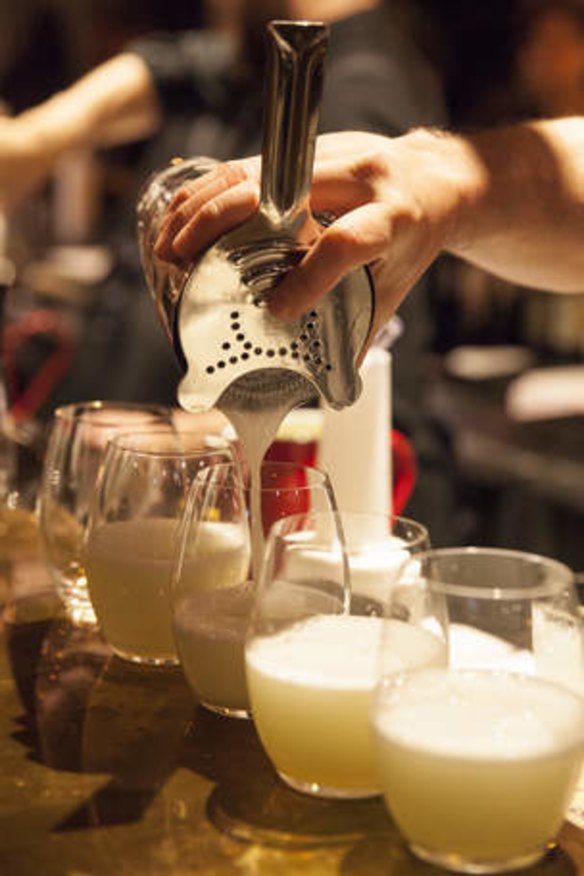Pisco: the South American flavour of the month
South American brandy pisco is enjoying some time in the sun.

The increased presence of South and Central American food in the local diet in recent years has had the side effect of expanding our drinking horizons too. For better or worse, malbec seems to have become lodged in cork-dork consciousness, the beer repertoire is inching beyond Corona and Quilmes and people have been emphatically alerted to the fact that tequila (real tequila, the one without a red plastic sombrero) is a drink to be treasured, not feared. It seems only right then that pisco too should have its chance to shine.
Pisco is a potent – some would claim mind-altering – grape brandy produced in Peru and Chile. Both countries claim that they are the one true originator of pisco, a squabble that's been going on since the Spanish stomped in, bringing with them the grapes that are now used to make pisco (said grapes didn't always flourish in their new home and so, instead of chucking them, winemakers turned them into brandy and – voila – an ongoing rivalry was born).
In the interests of peace and harmony, let's just stick to the "both piscos have something to offer" line.
Peruvian pisco is a result of a two-week fermentation process using the juice and skins of up to eight different grape varieties. It is single distilled and kept in stainless steel for three months before being bottled. It's a clear, potent pisco with, given its undiluted nature and the contact with skins, a more idiosyncratic nature when it comes to taste, similar to the idea of terroir influencing wine.
Chile makes around 50 times more pisco annually than Peru and its less funky character comes from its manufacture that's more about process and aging than skin contact. Using fewer grape varieties and aged in oak barrels, Chilean pisco has a cleaner, more consistent character and can range in colour from pale yellow to amber.
Just as with most spirits, there will always be those who claim that drinking pisco straight is the only way to do it justice, but cocktail makers across the world have fallen in love with the stuff because of its versatility, the fact that it has the body of something like a good tequila but the flexibility of white rum.
The most famous – and arguably the best – expression of pisco is the Pisco Sour. Two parts pisco, one part lemon juice, a teaspoon of sugar (or a dash of sugar syrup) and an egg white are shaken vigorously over ice and then strained into a cocktail glass. The egg white gives the drink a fluffy head which is then spotted with a few drops of Angostura bitters. It's a delicious drink, refreshing and bracing but one needs to proceed with caution.
Pisco has been called the "flying bird" and lauded for its ability to "loosen tongues and sharpen wits" but cocktail historian David Wondrich supplies the best description of the effects of pisco overindulgence.
With pisco, it's good to remember that a little goes a long way.
